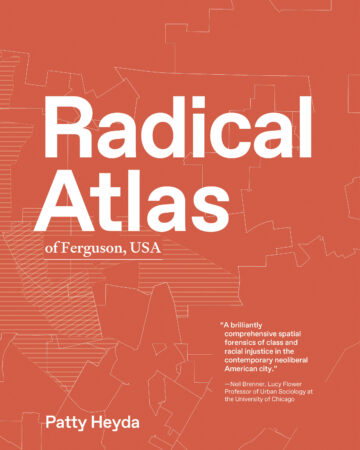Ferguson, Missouri, became the epicenter of America’s racial tensions after the 2014 murder of Michael Brown and the protests that followed in its wake. Though this suburb just outside St. Louis might have seemed like an average midwestern town, the activism that exploded there after Brown’s killing laid bare how longstanding municipal planning policies had led to racial segregation, fragmentation, poverty and police targeting.
In over 100 maps, Patty Heyda charts the systemic forces that have defined Ferguson and the American first-ring suburb more broadly. Through an in-depth look at the contradictions undergirding city planning and design, it illuminates how tax incentives, housing codes, urban design, policing, philanthropy and even landscaping often work against the betterment of residents’ lives. At its heart lies a key question: Just who are our cities being built for?
A profound rethinking of what maps can be, Radical Atlas of Ferguson, USA will challenge city planners, designers and everyday citizens to change their perspective of public space.
Praise for Radical Atlas
“This singular book makes it possible to see St. Louis and the Ferguson Uprising in a new way. On every page. Map by map, it both extends and deepens our account of the deep structures and emergent histories that framed both the murder of Michael Brown and the revolt that followed.” — Walter Johnson, Winthrop Professor of History and professor of African and African American Studies at Harvard University, and author of The Broken Heart of America: St. Louis and the Violent History of the United States.
About the author
Patty Heyda is an urban and architectural designer, author and educator. She studies American cities and design politics, with a focus on mapping, privatization, St. Louis, spatial justice in weak market cities and transitioning American suburbs. She is an associate professor in the Sam Fox School of Design & Visual Arts at Washington University in St. Louis.
